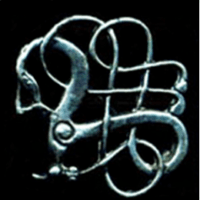| Communication, Settlements and Landscape – Social Dimensions in Norse Societies in the Viking and Early Medieval periods (c. 800-1200 AD), The project includes areas in Scotland, Iceland, South Greenland and Canada. | This four year PhD project focus on the dynamics between the physcial landscape, communication in various shapes, settlement structure and the society. Focus areas in the Orkneys, Iceland, Greenland and Canada provide the empirical base of the project. The project is concerned with various types of communication within the periods, and analyse active transportation strategies as well as static visual communication between e.g. farm sites or farm sites and travellers. | |
| The Assembly Project - Meeting-places in Northern Europe AD 400-1500 | The Assembly Project – Meeting-places in Northern Europe AD 400-1500 (TAP) is an international collaborative research project. TAP aims to investigate the role of assemblies (things) in the creation of collective identities and emergent kingdoms in medieval Northern Europe (AD 400-1500). Main research questions are: What was the role of assemblies (things) in the creation, consolidation and maintenance of collective identities, emergent polities and kingdoms in early medieval Northern European populations and communities? The project will, in its entirety, contribute an entirely new combined data set for the study of early governance and administrative organisation in the societies of North West Europe. It will achieve a range of objectives including: - the establishment of a relative chronology of assembly sites - new knowledge on the role of assemblies in processes of territorialisation. - a study of how law and collective norms and values were established and enforced onto colonised/conquered areas. - a study of gender perspective concerning power relations and assembly access - a historiography of assemblies and their relevance to the concepts of national identity and statehood | |
| Snow modelling to understand the impacts of Little Ice Age climate change | This project aims to use an existing process based snow model to simulate changes in snow cover and distribution for sites in Iceland and in Greenland. Changes in the duration and depth of snow cover through periods of climatic deterioration may have had significant impacts on pastoral farmers, particularly if snow cover extended into the spring. The Little Ice age is a known period of climatic cooling that would have increased the duration of snow cover. Long term records of snow cover beyond a few decades do not exist so modelling is the only way to determine how snow cover would have changed. Climatic scenarios are drawn from Global Circulation models to show snow cover in good (warm) and bad (cold) years. Fieldwork in March 2014 at the two study areas took measurements of snow thickness and density allowing a calibration of the model against modern meteorological datasets. Currently (November 2015) this project is being written up for publication in 2016. Sites in Iceland will be compared to sites in Greenland. |
Search Project Results: Other
NABO uses Accessibility Checker to monitor our website's accessibility. Read our Accessibility Policy.

Manage Cookie Consent
To provide the best experience using this website, we use technologies like cookies to store and/or access device information. Consenting to these technologies will allow us to process data such as browsing behaviour or unique IDs on this site. Not consenting or withdrawing consent may adversely affect certain features and functions. We do not collect or pass on marketing data, although be aware that some services such as YouTube might well do.
Functional Always active
The technical storage or access is strictly necessary for the legitimate purpose of enabling the use of a specific service explicitly requested by the subscriber or user, or for the sole purpose of carrying out the transmission of a communication over an electronic communications network.
Preferences
The technical storage or access is necessary for the legitimate purpose of storing preferences that are not requested by the subscriber or user.
Statistics
The technical storage or access that is used exclusively for statistical purposes.
The technical storage or access that is used exclusively for anonymous statistical purposes. Without a subpoena, voluntary compliance on the part of your Internet Service Provider, or additional records from a third party, information stored or retrieved for this purpose alone cannot usually be used to identify you.
Marketing
The technical storage or access is required to create user profiles to send advertising, or to track the user on a website or across several websites for similar marketing purposes.
